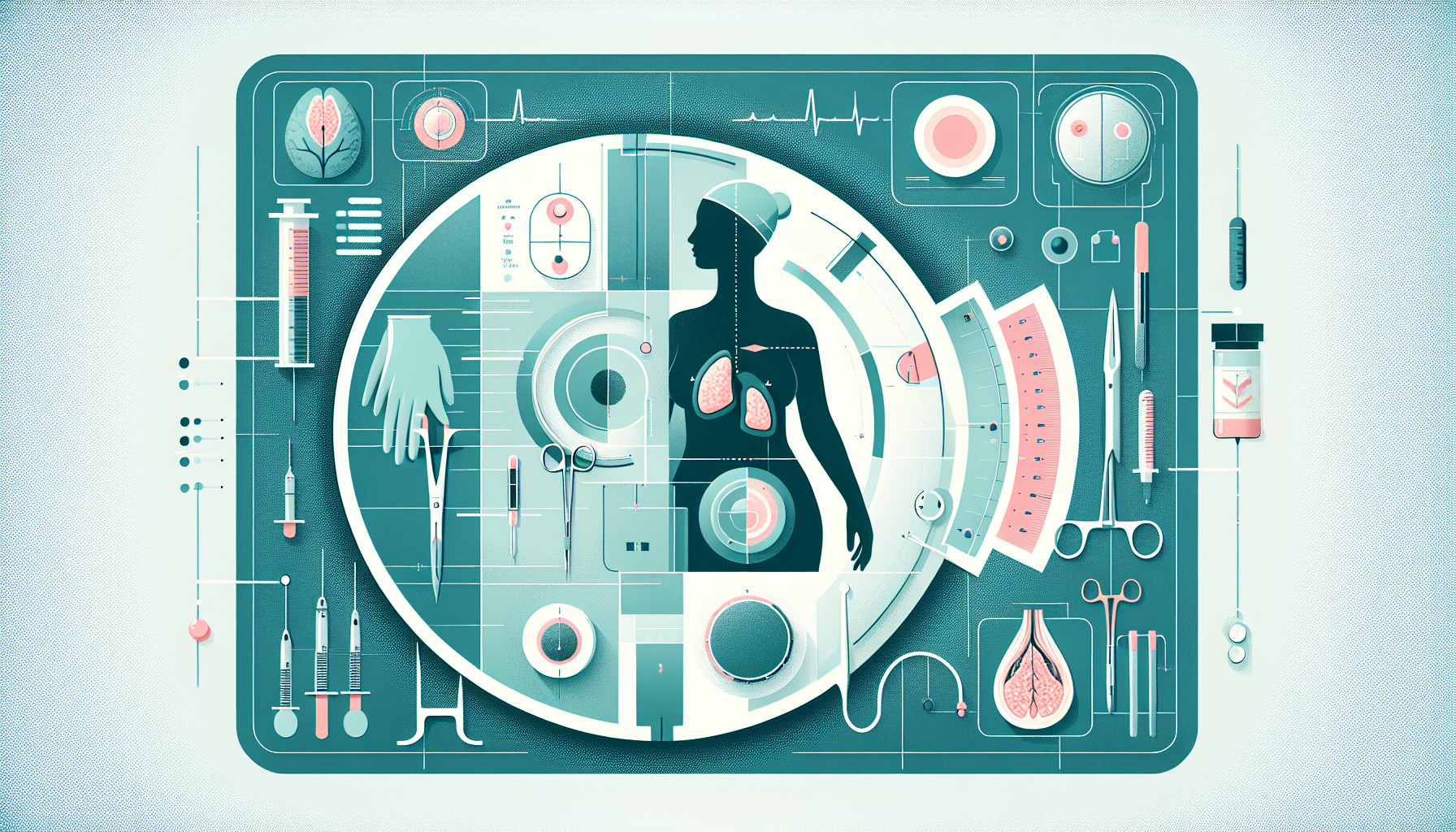Our Summary
This research paper talks about how breast cancer treatment has evolved over the years. Nowadays, doctors are leaning towards less aggressive surgeries that both treat the cancer and preserve the appearance of the breast. This includes things like skin and nipple-saving mastectomies, which have been shown to be just as effective as more invasive procedures. These techniques can also be used as preventative measures for women with certain genetic mutations that put them at higher risk for breast cancer.
The paper also discusses the use of implants for breast reconstruction after a mastectomy. They found that while implants are a common and cost-effective approach to reconstruction, there may be a higher risk of complications if the surgery also included a nipple-sparing mastectomy.
Overall, the study suggests a shift in breast cancer treatment towards methods that prioritize both the patient’s health and their self-image.
FAQs
- What are some of the less aggressive surgeries being used for breast cancer treatment today?
- Can these less invasive mastectomy procedures also be used as preventative measures?
- Is there a higher risk of complications with implants if the surgery also included a nipple-sparing mastectomy?
Doctor’s Tip
One helpful tip a doctor might tell a patient about mastectomy is to discuss with their healthcare team about the different options available for breast reconstruction after the surgery. It’s important for the patient to understand the potential risks and benefits of each option in order to make an informed decision that aligns with their personal preferences and goals for their post-mastectomy appearance. Additionally, it’s important for the patient to follow their doctor’s recommendations for post-operative care to promote healing and reduce the risk of complications. Regular follow-up appointments with their healthcare team are also crucial for monitoring their recovery and overall health.
Suitable For
Patients who are typically recommended mastectomy include:
- Patients with early-stage breast cancer that has not spread to other parts of the body.
- Patients with a large tumor-to-breast size ratio, where lumpectomy may not be a suitable option.
- Patients with a genetic mutation (such as BRCA1 or BRCA2) that puts them at a high risk for developing breast cancer.
- Patients who have had previous radiation therapy to the breast and are now facing a recurrence of cancer.
- Patients with a history of multiple breast cancer diagnoses in the same breast.
- Patients with inflammatory breast cancer, a rare and aggressive form of the disease.
- Patients with a history of ductal carcinoma in situ (DCIS) that has not responded to other treatments.
Ultimately, the decision to undergo a mastectomy is based on a variety of factors including the stage and type of cancer, the patient’s overall health, and their personal preferences. It is important for patients to discuss all treatment options with their healthcare team to determine the best course of action for their individual situation.
Timeline
Before a mastectomy:
- Patient receives a breast cancer diagnosis and discusses treatment options with their healthcare team
- Patient may undergo imaging tests and biopsies to determine the extent of the cancer
- Patient may undergo chemotherapy or radiation therapy before surgery to shrink the tumor
- Patient discusses options for breast reconstruction with their surgeon
- Patient prepares for surgery, including arranging for post-operative care and support
After a mastectomy:
- Patient undergoes the mastectomy surgery, which may involve removing the entire breast or just a portion of it
- Patient may undergo immediate breast reconstruction with implants or tissue from another part of the body
- Patient may experience pain, swelling, and limited arm movement in the days and weeks following surgery
- Patient may need to wear a special bra or compression garment to support the healing process
- Patient may undergo additional treatments such as chemotherapy or radiation therapy to reduce the risk of cancer recurrence
- Patient may attend follow-up appointments with their healthcare team to monitor their recovery and discuss long-term care and surveillance
Overall, the patient may experience a range of physical, emotional, and psychological challenges before and after a mastectomy, but with advances in surgical techniques and supportive care, many patients are able to regain their health and quality of life.
What to Ask Your Doctor
Some questions a patient should ask their doctor about mastectomy include:
- What are the different types of mastectomy procedures available and which one would be most appropriate for my situation?
- What are the potential risks and complications associated with mastectomy surgery?
- Will I be able to preserve the appearance of my breast, such as with a skin and nipple-saving mastectomy?
- What are the options for breast reconstruction after a mastectomy and how do they compare in terms of effectiveness and potential complications?
- How will a mastectomy impact my future risk of breast cancer recurrence?
- Are there any alternative treatments or therapies that could be considered instead of or in addition to a mastectomy?
- What is the recovery process like after a mastectomy and what can I expect in terms of physical and emotional recovery?
- Are there any long-term effects or considerations I should be aware of after undergoing a mastectomy?
- How will a mastectomy impact my ability to breastfeed in the future, if applicable?
- Are there any support groups or resources available for patients undergoing a mastectomy that I should be aware of?
Reference
Authors: Toh U, Takenaka M, Iwakuma N, Akagi Y. Journal: Surg Today. 2021 Jun;51(6):862-871. doi: 10.1007/s00595-020-02175-4. Epub 2020 Nov 13. PMID: 33185799
